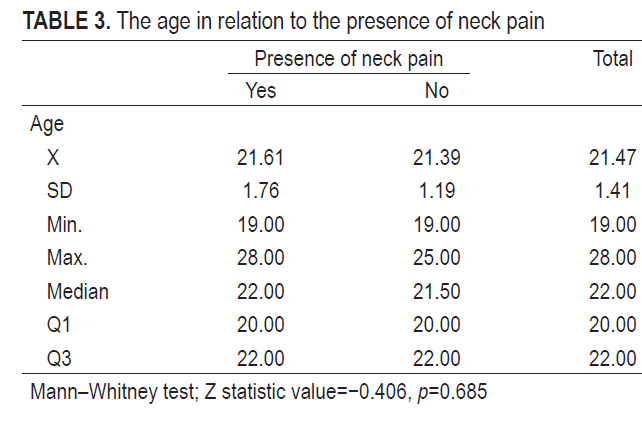Incidence and impact of neck pain on daily life activities of the student population
DOI:
https://doi.org/10.17532/jhsci.2022.1773Keywords:
Neck pain, incidence of neck pain, daily life activities, student populationAbstract
Introduction: Neck pain (NP) may have a local mechanical (non-specific) origin caused by dysfunction of the joint, muscle, and ligament structures in the neck or by a discogenic etiology. Most people (50–60%) suffer from NP at some point in their lives. They are more common in highly developed countries and in urban areas. The aim of this study is to determine the prevalence of NP and its impact on daily living activities in the student population.
Methods: The study included students of the University of Sarajevo - Faculty of Health Studies in the period from May 2021 to June 2021. The sample of respondents was formed by the method of random selection and included respondents of both sexes, aged 19–28 years. The study was conducted as a transversal cross-sectional study at a specific time point on the frequency of NP and the ability to perform activities of daily living in the student population.
Results: Out of the total number of 255 respondents, 77 (30.2%) reported that they have NP while 178 (69.8%) respondents reported that they do not feel NP and it was found that there was no statistically significant difference between the age groups of the subjects with and without NP. The study concluded that a higher percentage of respondents with NP did not engage in leisure activities and that respondents with NP had lower mobility in daily life, sleep disturbance, and poorer ability to perform activities of daily living due to NP.
Conclusion: The study conducted revealed that a significant percentage of the student population with NP has a lower ability to perform activities of daily living. Considering the above facts and the current transformation of the educational model, in which static postures dominate, it is necessary to design and implement programs for targeted physical activity and prevention of long-term inactivity that leads to painful musculoskeletal syndromes.
Downloads

Downloads
Published
License
Copyright (c) 2022 Eldad Kaljić, Martina Jurišić, Bakir Katana, Namik Trtak, Adela Erović Vranešić, Nikola Jevtić, Gordan Bajić, Adnan Mujezinović

This work is licensed under a Creative Commons Attribution 4.0 International License.










